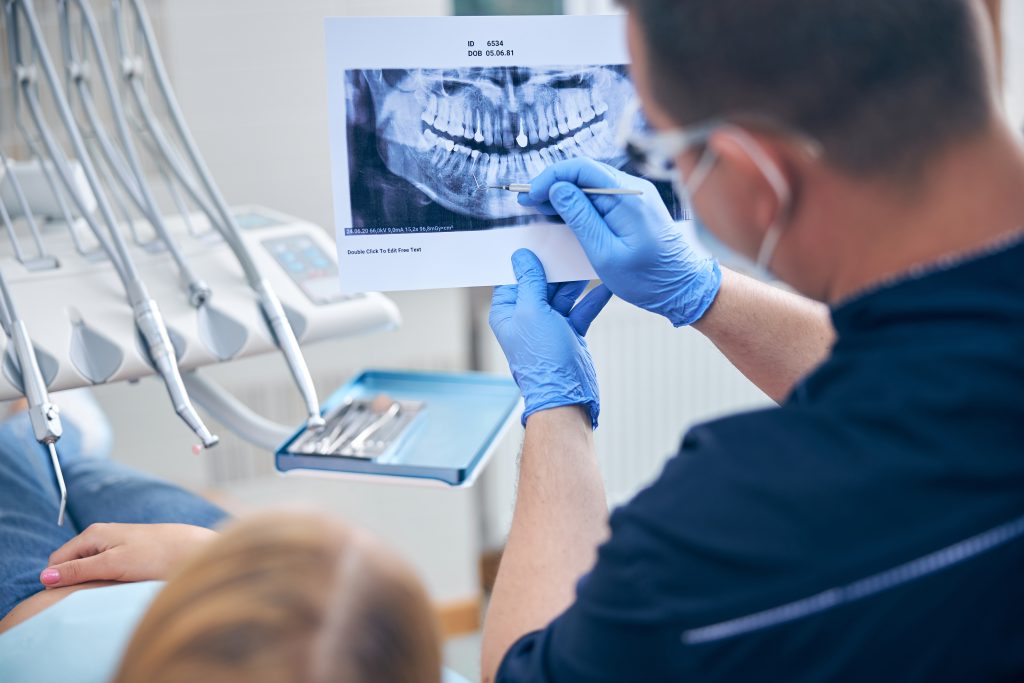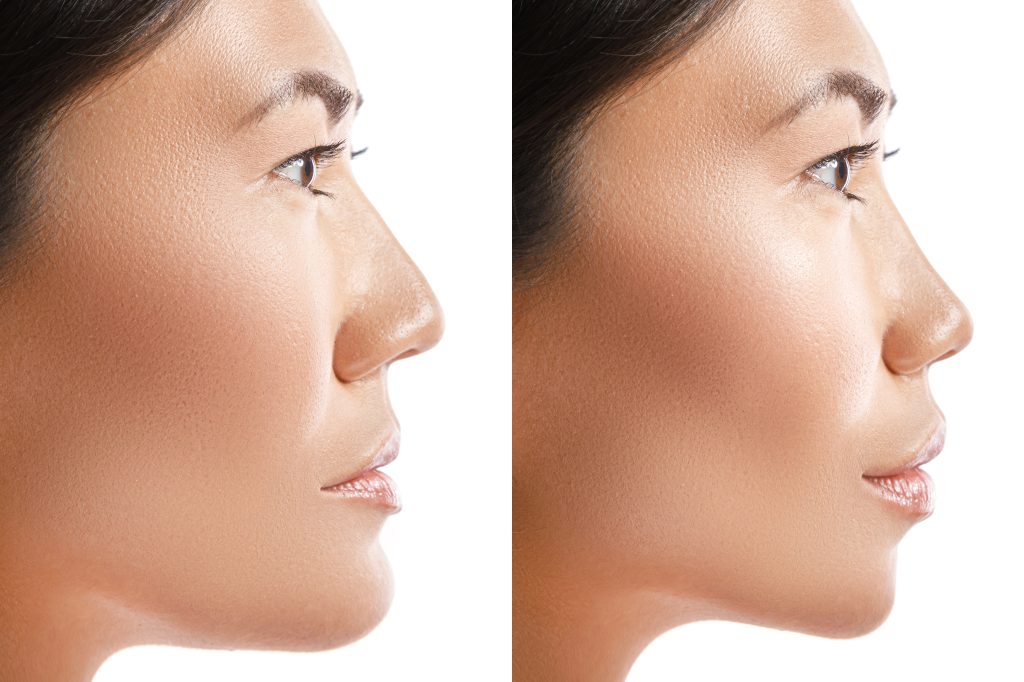Jaw Surgery (Orthognathic Surgery)
Orthognathic surgery, also known as jaw surgery, is a procedure performed to correct misalignment of the upper (maxilla) and/or lower (mandible) jaw. It is not a one-time event but rather a multi-step process that involves initial orthodontic treatment, followed by the actual surgery and a period of recovery, before further orthodontic work is done.

Why is jaw surgery done?
Surgery on the jaw may be necessary if orthodontic treatment alone is unable to resolve a problem related to the positioning of the jaws and teeth.
Your orthodontist and oral surgeon will collaborate to create a suitable treatment plan for your specific condition.
Jaw surgery can assist with various issues, such as:
- aligning your teeth so they fit together properly when your mouth is closed
- adjusting factors that impact the proportional balance of your facial features
- providing assistance in reducing discomfort caused by a condition affecting the temporomandibular joint (TMJ)
- restoring damage either caused by an accident or present since birth to the facial area, such as a gap in the roof of the mouth
- stopping additional damage to your teeth
- facilitating tasks such as biting, masticating, or ingesting, aiding in their simplicity
- dealing with respiratory issues, like the act of breathing through the mouth and the condition of obstructive sleep apnea
The best time to undergo jaw surgery is when the jaw has finished growing, usually around the late teenage years or early twenties.
Jaw Surgery (Orthognathic Surgery) – Symptoms
There are several common issues that can be resolved:
- A protruded or retruded chin
- An exaggerated display of gum tissue, also known as gummy smiles.
- Overall elongation of face
- Facial asymmetry
- Post-traumatic facial injury and defect
- Obstructive Sleep Apnea
- Cleft lip/palate or other significant abnormalities in the facial structure are considered as part of a holistic management approach.

Three types of corrective jaw surgery
Upper jaw surgery
Upper jaw surgery can be performed to address issues such as excessive size, insufficient size, excessive forward or backward position, or misalignment. It can greatly improve gummy smiles, improper bites, and support for the lips and midface. In some cases, upper jaw surgery is done alongside lower jaw or chin surgery.
Lower jaw surgery
If your lower jaw, also known as the mandible, is not properly proportioned or misaligned, it can be surgically corrected. This includes cases where the jaw is too big, too small, too forward, too backward, or misaligned. Lower jaw surgery is capable of greatly enhancing the appearance and function of your bite, facial profile, and overall symmetry. In certain instances, lower jaw surgery may be performed in conjunction with upper jaw surgery or chin surgery.
Upper and lower jaw surgery
Bimaxillary surgery, also known as adjusting both jaws, is sometimes necessary to correct issues with the bite or facial structure.
What happens before this procedure?
Before undergoing jaw surgery, extensive preparations are necessary. Your healthcare provider will require specific details in order to carefully plan the procedure. In order to gather this information, several tests and procedures might be performed.
- X-rays.
- Computed tomography (CT) scans.
- Photographs of your teeth and jaw.
- Dental models are made by taking impressions of your teeth.
- They might also scan your teeth.
What does jaw surgery involve?
Jaw surgery can involve the upper jaw (maxilla), lower jaw (mandible), or both, depending on individual concerns and assessment by the medical team. The surgery is performed inside the mouth, so there are no visible scars on the face. In some cases, a small incision may be made at the jaw angle, but it is nearly invisible after a few weeks. During the surgery, the jaws are repositioned and held in place with screws and plates beneath the gum, which are typically left there permanently. The jaws are usually not wired together, but orthodontic elastics may be worn to help the bite settle after the surgery.

Recovery
The typical length of hospital stay after surgery is between 1 and 4 days for the majority of individuals.
Once you are discharged from the hospital, your doctor will provide you with guidelines regarding your diet and oral care. It is crucial to adhere to these instructions cautiously as you recuperate.
It is typical to have swelling, stiffness, and discomfort in your face and jaw following your surgery. However, these symptoms should gradually diminish as time progresses.
Meanwhile, your doctor will provide you with prescriptions for medications that will help alleviate these symptoms.
You might encounter a situation where your upper or lower lip becomes numb. Typically, this is a temporary occurrence that will fade away within several weeks or months. However, in rare instances, it can be a lasting condition.
The process of recovering can last for a period ranging from 6 to 12 weeks. Once a few weeks have passed during the recovery phase, your orthodontist will proceed to align your teeth using braces.
After your braces are taken off, the orthodontist will provide you with a retainer to maintain the alignment of your teeth.
What are the Benefits?
Maintaining good oral hygiene is simpler when one does not have misaligned teeth or bite issues. Difficulties in speech or chewing caused by jaw imbalances can be solved. In cases of severe misalignment and jaw discrepancies, excessive tooth wear over time can be reduced. By aligning the jaw bones, balance is restored to the middle and lower parts of the face, resulting in improved facial appearance. The ultimate outcome is a healthier and more content individual.
Orthognathic surgery is a reliable solution for complicated dental and facial issues. It guarantees optimal outcomes in terms of both functionality and appearance.
Treatment in Türkiye:
The medical staff of surgical teams, doctors, and consultants at REHABTÜRK can provide the best treatment options and free consultations, striving to stay up-to-date on the latest medical technologies and methods.
